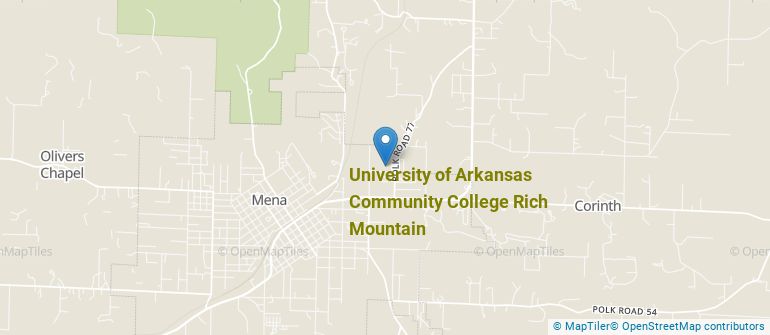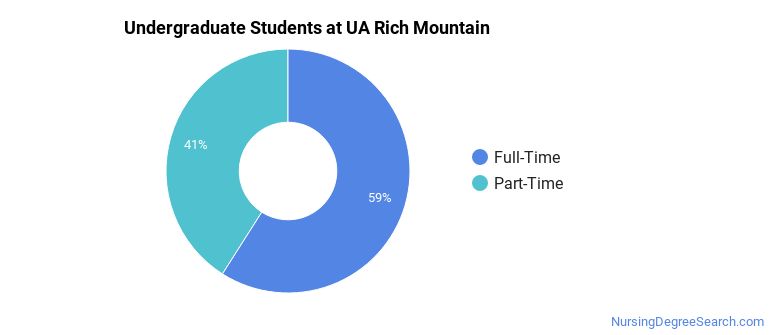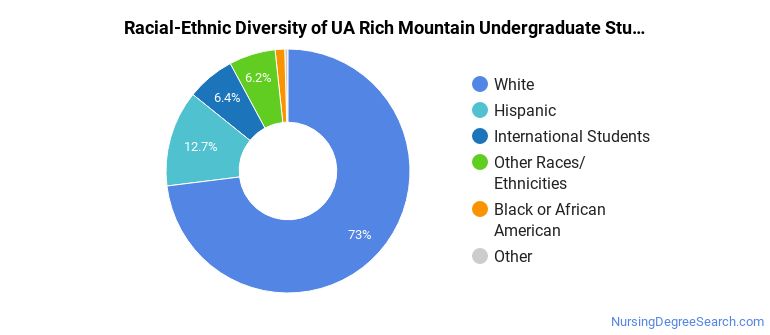University of Arkansas Rich Mountain Nursing Programs
Located in Mena, Arkansas, University of Arkansas Rich Mountain is a public institution. The location of UA Rich Mountain is a good match for students who are interested in living in a college town while they pursue their degree.
Where Is University of Arkansas Rich Mountain?

Contact details for UA Rich Mountain are given below.
| Contact Details | |
|---|---|
| Address: | 1100 College Dr, Mena, AR 71953 |
| Phone: | 479-394-7622 |
| Website: | www.uarichmountain.edu |
How Do I Get Into UA Rich Mountain?
You can apply to UA Rich Mountain online at: https://eapplication.uarichmountain.edu/login.asp
Can I Afford University of Arkansas Rich Mountain?
Student Loan Debt
While almost two-thirds of students nationwide take out loans to pay for college, the percentage may be quite different for the school you plan on attending. At UA Rich Mountain, approximately 6% of students took out student loans averaging $3,555 a year. That adds up to $14,220 over four years for those students.
University of Arkansas Rich Mountain Undergraduate Student Diversity

Gender Diversity
Of the 471 full-time undergraduates at UA Rich Mountain, 41% are male and 59% are female.

Racial-Ethnic Diversity
The racial-ethnic breakdown of University of Arkansas Rich Mountain students is as follows.

| Race/Ethnicity | Number of Grads |
|---|---|
| Asian | 2 |
| Black or African American | 6 |
| Hispanic or Latino | 60 |
| White | 344 |
| International Students | 30 |
| Other Races/Ethnicities | 29 |
University of Arkansas Rich Mountain Nursing Concentrations
The table below shows the number of awards for each concentration.
| Major | Basic Certificate | Associate’s | Undergraduate Certificate | TOTAL |
|---|---|---|---|---|
| Nursing Assistant/Aide and Patient Care Assistant/Aide | 22 | 0 | 0 | 22 |
| Licensed Practical/Vocational Nurse Training | 0 | 0 | 19 | 19 |
| Registered Nursing | 0 | 13 | 0 | 13 |
| TOTAL | 22 | 13 | 19 | 54 |
References
*The racial-ethnic minorities count is calculated by taking the total number of students and subtracting white students, international students, and students whose race/ethnicity was unknown. This number is then divided by the total number of students at the school to obtain the racial-ethnic minorities percentage.
More about our data sources and methodologies.
